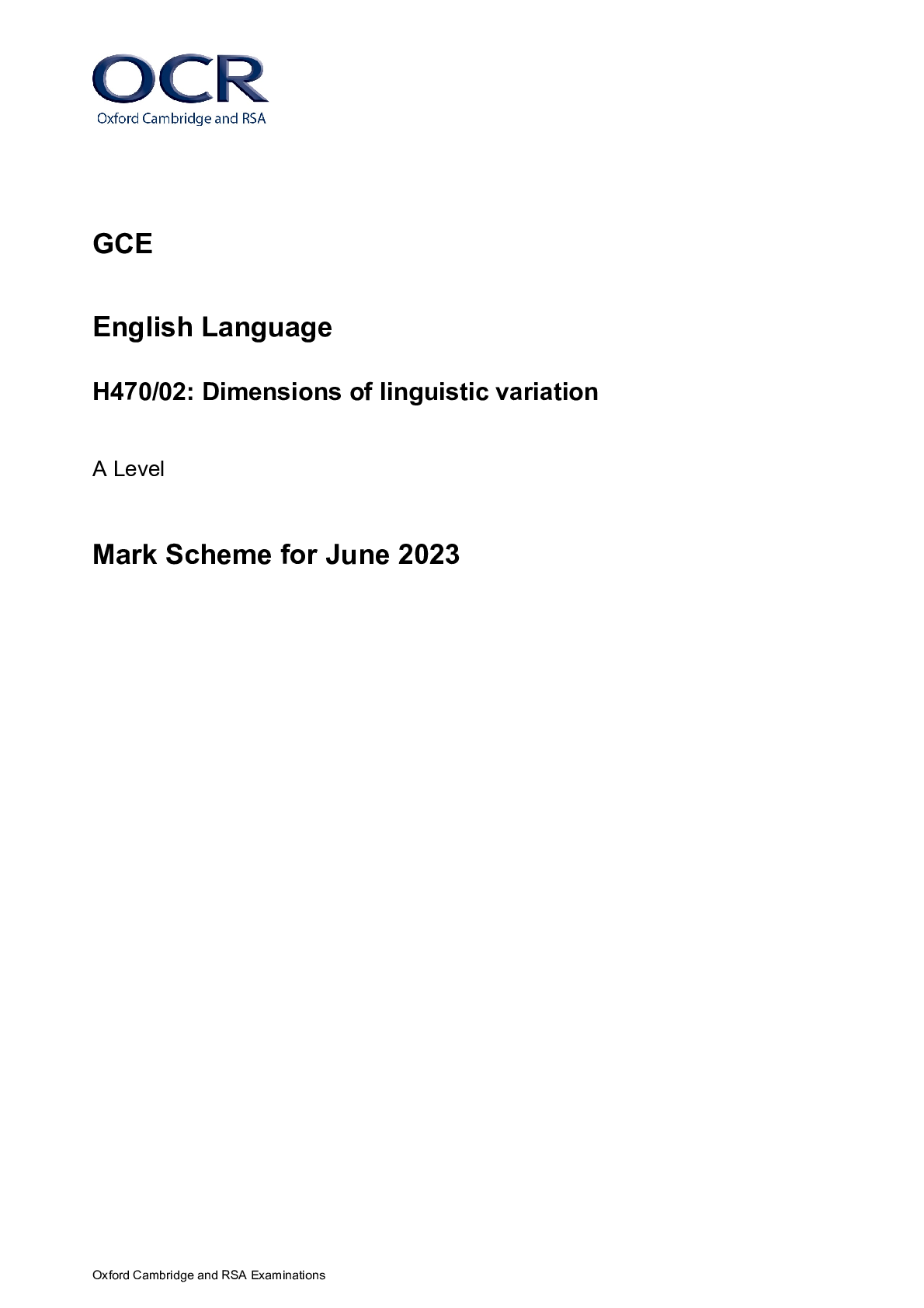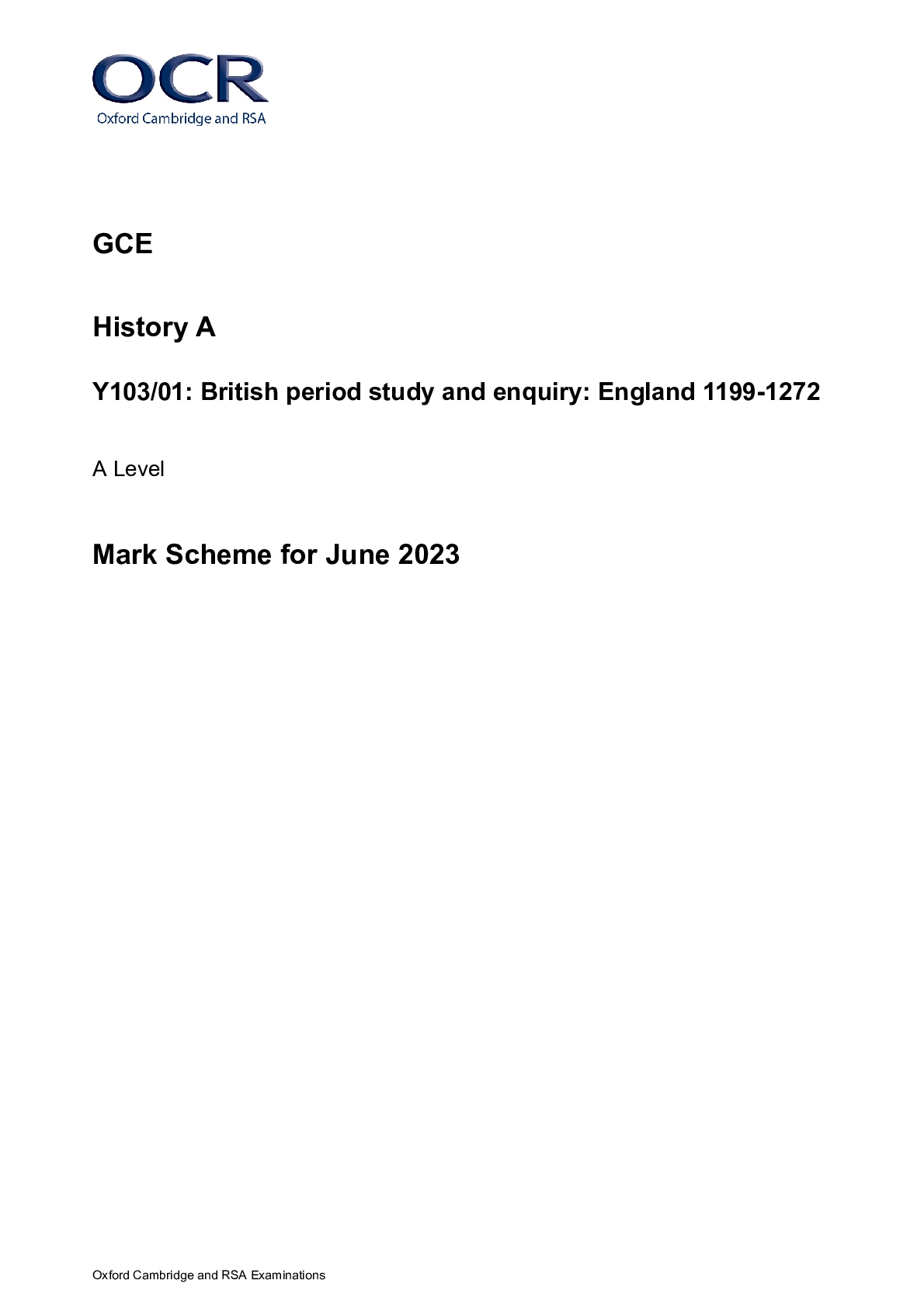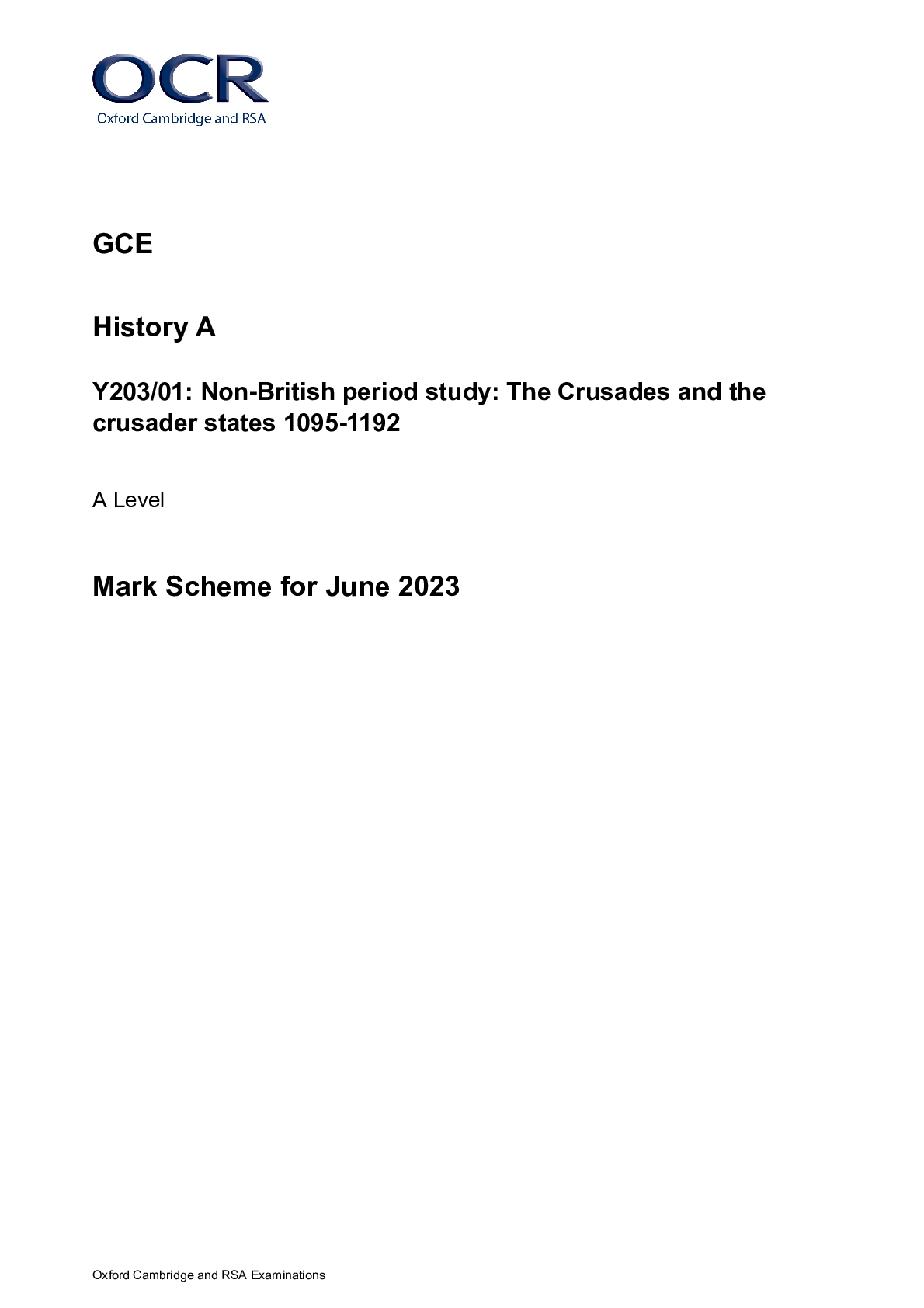English > MARK SCHEME > > Practice paper – Set 2 A Level English Language H470/02 Dimensions of linguistic variation PRACT (All)
> Practice paper – Set 2 A Level English Language H470/02 Dimensions of linguistic variation PRACTICE PAPER MARK SCHEME
Document Content and Description Below
Indicative Content - Please note: indicative content indicates possible points candidates might make, but this is not an exhaustive account. Any valid response should be rewarded. Question Guidance ... Marks Text features 1 Text A is a transcript from a private data source. Dylan and Rory are twins aged two and five months. They are playing together with some toys and also talking to their mother. Using the appropriate terminology to explain your findings, examine the language development stage of both child-participants as evidenced in the transcript. You should identify and analyse the phonology, grammar and meaning of their utterances. Use your knowledge of theories and concepts of child language acquisition to support your answer. Meaning: • Both child-participants use labelling correctly ‘gates’/’gate for animals’ – and also use demonstrative determiners accurately, switching between ‘this bit’/’that bit’. • Rory uses a possessive determiner repeatedly to establish ownership ‘my gates (.) my gates’. • Rory seems to be more dominant within the conversation and is more emphatic (‘aagh’/ ‘yay’); Dylan seems to be more compliant/use of hedging (‘just making your gate Rory’). 20 Phonology: • Four of Rory’s utterances are stressed; this is not a feature of Dylan’s speech, or of their mother’s. • There is lot of repetition throughout: R: ‘I playing the gate (.) look (.) I playing the gate’ /M: ‘you’re playing with the gates’ /D: ‘playing with the gates’, perhaps suggesting that once the phrasing is established it is being recycled • Both children use standard pronunciation, suggesting speech that is relatively advanced for their age • One possible exception: Rory uses clipping at one point ‘how /baυt/ [about] this bit’; this could be unstressed syllable deletion – copied from adults’ informal usage or a phonological error common to the stage Grammar: • Most of children’s utterances are generally short telegraphic constructions ‘I making it’/’that go there’, showing age/stage-characteristic omission of auxiliary verbs (could also suggest innatism) • Dylan makes use of demonstrative pronouns to create deixis ‘that go there’ • Repetition of concrete nouns ‘animals’/’gate’/’bit’ throughout, reflecting topic/activity • Rory omits the preposition as well as the auxiliary verb ‘’I playing the gate’; again, characteristic of telegraphic speech • Rory uses an imperative ‘try and do it mum’ and he alsoH470/02 Mark Scheme Practice paper 2 9 uses repeated declaratives separated by an imperative ‘I playing the gate (.) look (.) I playing the gate’ • Both children use standard syntax (e.g. subject-verbobject) appropriately (‘I playing the gate’/’I making it’). There may be specific relevant comment on parental interventions; these should be rewarded (although the focus needs to remain with the child participants). Eg: • The mother uses imperative sentence functions (‘let me see’/’let me show you’) to help move the gate-building activity along. • She also recasts Rory’s utterance, which has a missing preposition ‘you’re playing with the gates’; this is arguably then copied by Dylan. • Similarly, her use of vocatives is arguably modelling a form of power/politeness which Dylan then copies Question Guidance Marks Text features 1 Concepts: • Dylan seems to respond to his mother’s reframing of Rory’s first utterance ‘playing the gate’ > ‘playing with the gate’ – could be linked to Skinner (use of imitation) and/or to Bruner (interaction with caregivers). • The mother’s interaction with her sons provides scaffolding (Bruner) throughout; she supports them linguistically (see previous example) as well as on a practical level. • Dylan’s use of hedging ‘just making your gate Rory’ suggests an adaptive pragmatic response to Rory’s annoyance. • Imaginary language function (Halliday) evident throughout in terms of the premise of the game. 20 • Many of the utterances involve, include or revolve around the gates, supporting Nelson’s findings that nouns/naming words represent 60% of children’s early word production. • Possible links with innatism e.g. universal grammar: Dylan’s use of simple S+V+O construction ‘I making it’; also shows common omission of auxiliary. • Morphological development could also be discussed in light of Brown’s research (eg stage 2/present progressives) • Use of and refinement of labelling (‘gate’ > ‘gate for the animals’ can be linked to Aitchison). • Capacity for imaginative play also suggests cognitive development (link to Piaget). • Rory’s use of imperatives/directives confirms Goodwin’s work on male assertions of powerH470/02 Mark Scheme Practice paper 2 10 There are a total of 20 marks available for Question 1. Decide on a mark for AO1 out of 10, and then a separate mark for AO2 out of 10. Add the two marks together to reach a total out of 20 marks. It is possible that candidates may achieve different bands for each AO: allocate the mark according to the level of competency demonstrated for each AO individually. Level AO1 Mark AO2 Mark 5 • Assured reference to a wide range of language features, with appropriate and well-selected examples which support a focussed analysis. • The response will be enhanced by consistently accurate use of a wide range of appropriate terminology; writing is in a secure academic register. 9–10 • The response will make assured reference to stages of development explained and explored effectively, with well-selected examples. • The response will make discerning/perceptive links to theory or concepts in a way that suggests assured understanding of the relationship between theory and practice. 9–10 4 • The response will make consistently accurate and sustained reference to a range of language features, with appropriate examples and developed analyses. • The response will make consistently accurate use of a range of appropriate terminology to enhance the response; written expression is coherent. 7–8 • The response will make consistently accurate reference to stages of development with appropriate examples and an analysis which demonstrates awareness of the complexity of the processes involved. • The response will consistently connect the elements of the participants’ language usage with a variety of concepts/ theories in a way that suggests secure understanding of the relationship between theory and practice. 7–8 3 • The response will make generally accurate and developed reference to language features from the three levels specified in the question, with appropriate examples. • Accurate use of appropriate terminology will enhance the response; written expression is clear. 5–6 • The response will make generally accurate reference to stages of development, with appropriate examples and supporting comment or explanation. • The response will connect the elements of the participants’ language usage with concepts and theories in a way that is valid and relevant [Show More]
Last updated: 2 years ago
Preview 1 out of 23 pages
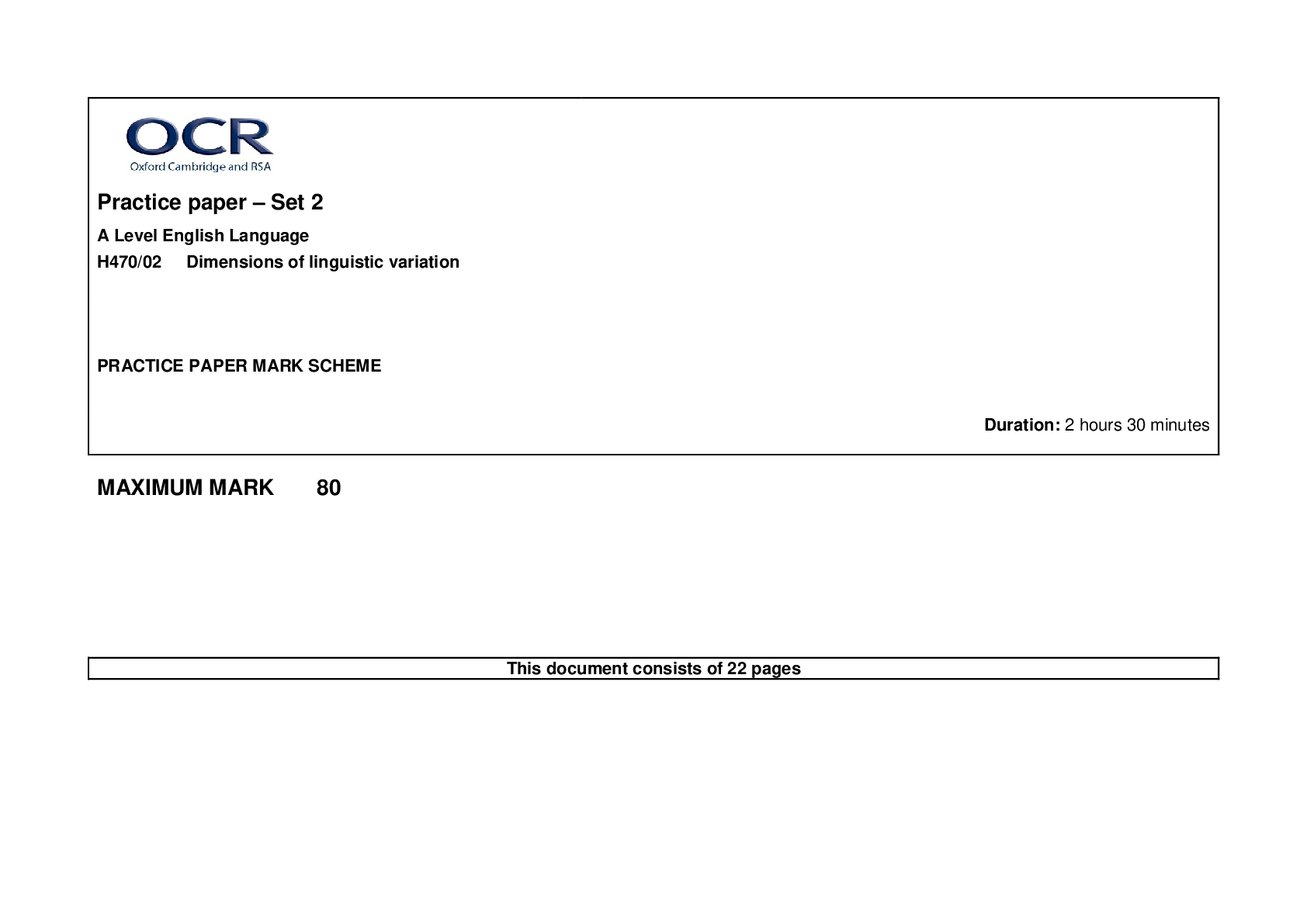
Buy this document to get the full access instantly
Instant Download Access after purchase
Buy NowInstant download
We Accept:

Reviews( 0 )
$10.00
Can't find what you want? Try our AI powered Search
Document information
Connected school, study & course
About the document
Uploaded On
Jun 29, 2022
Number of pages
23
Written in
Additional information
This document has been written for:
Uploaded
Jun 29, 2022
Downloads
0
Views
106


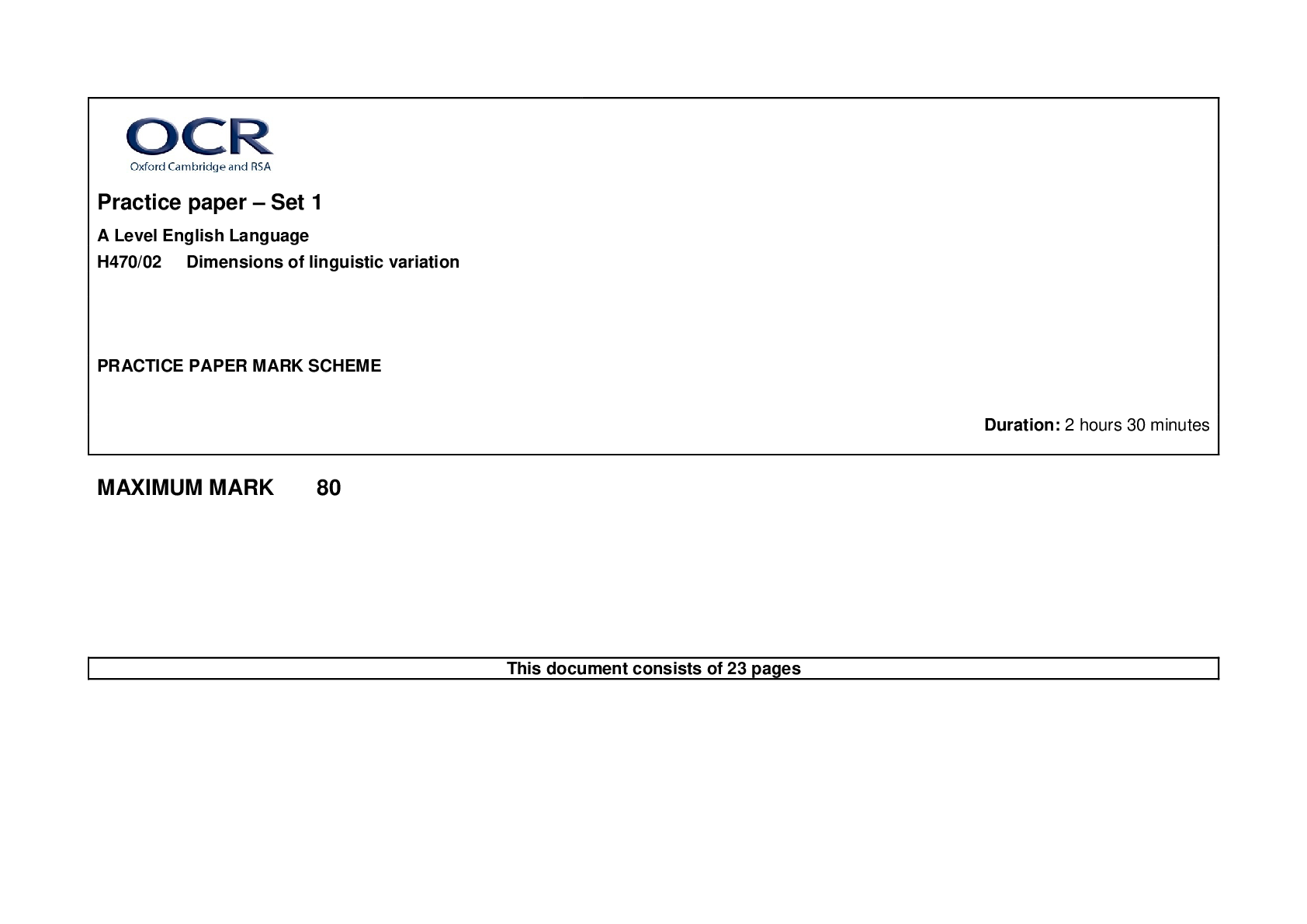
.png)
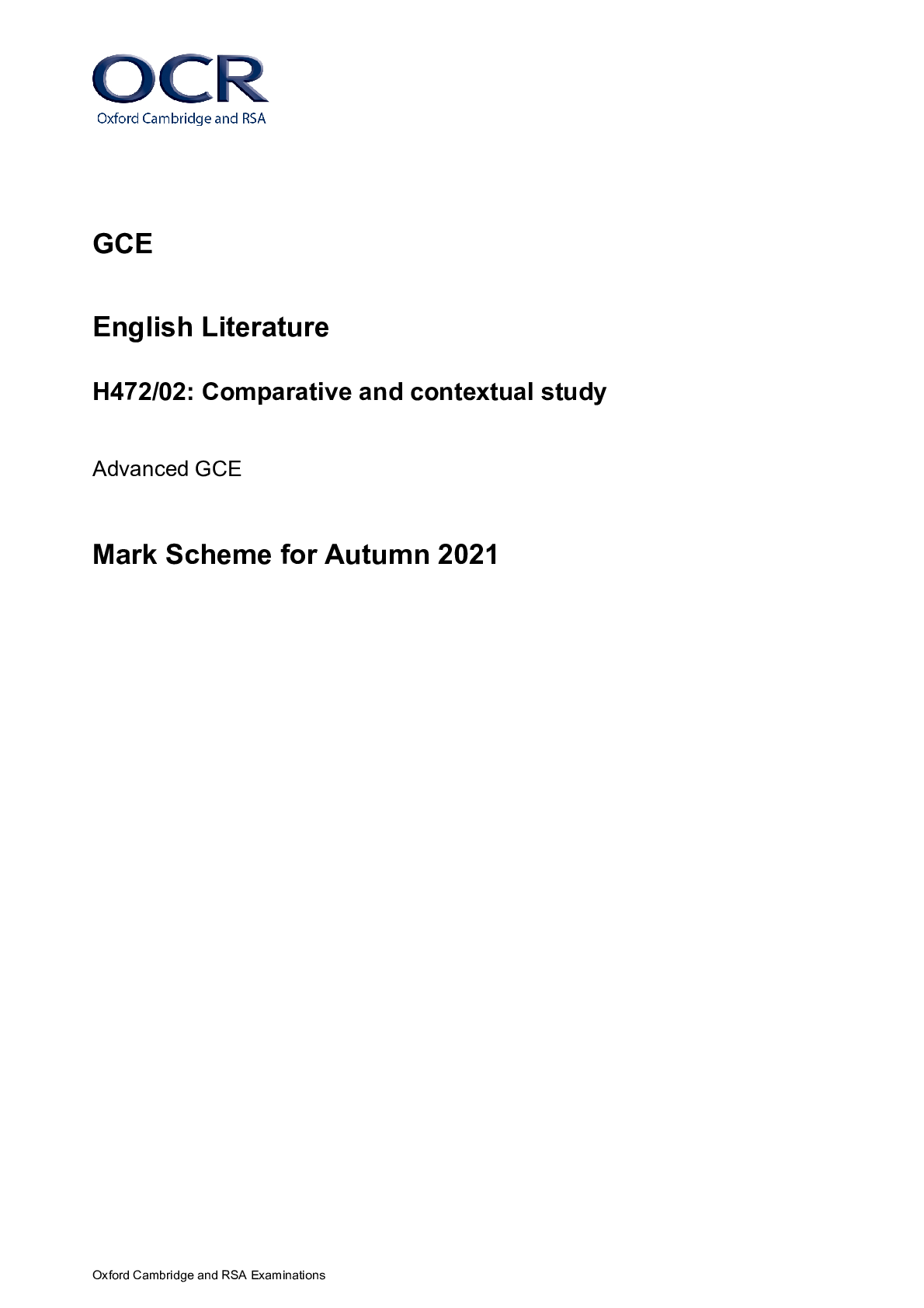

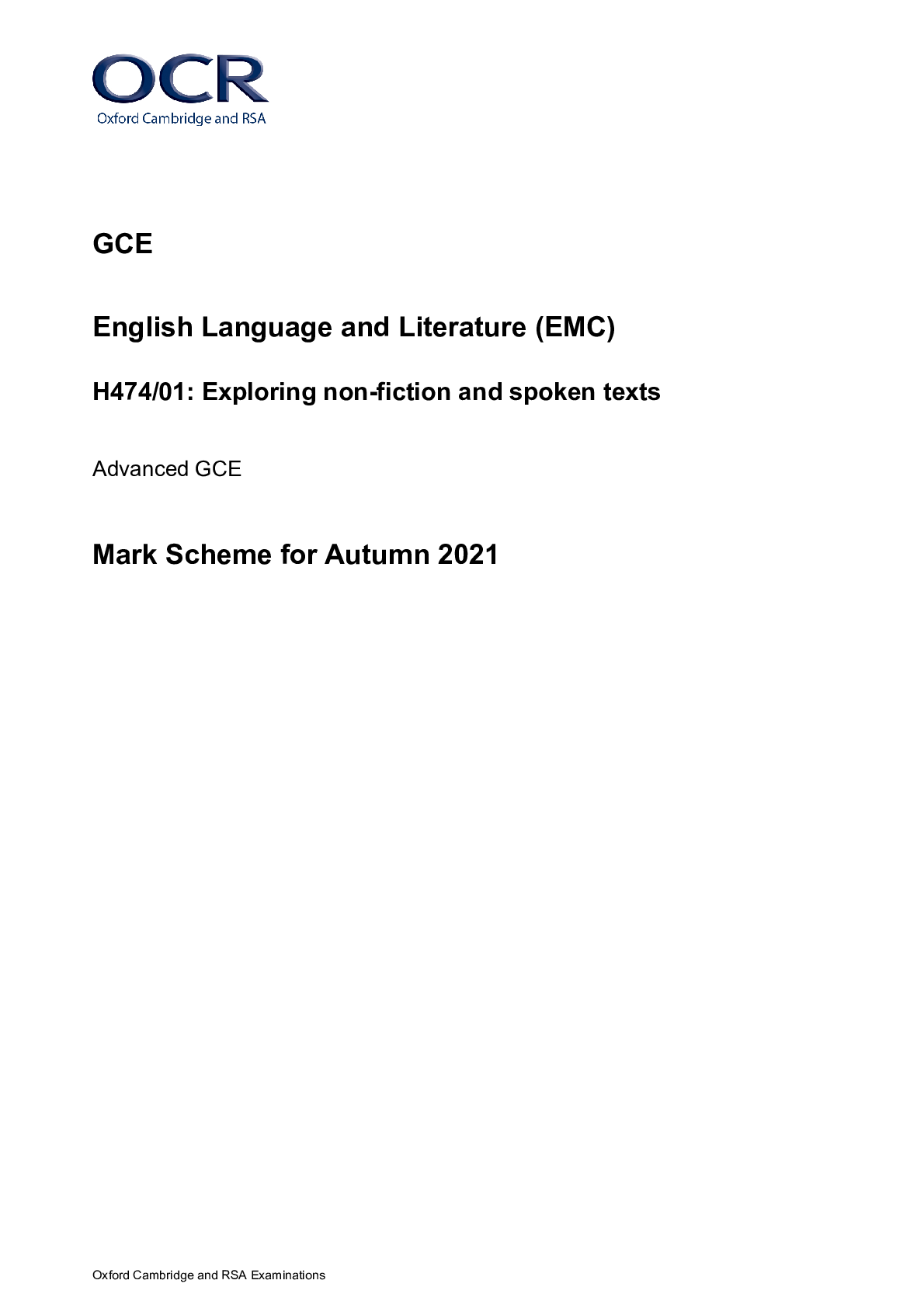
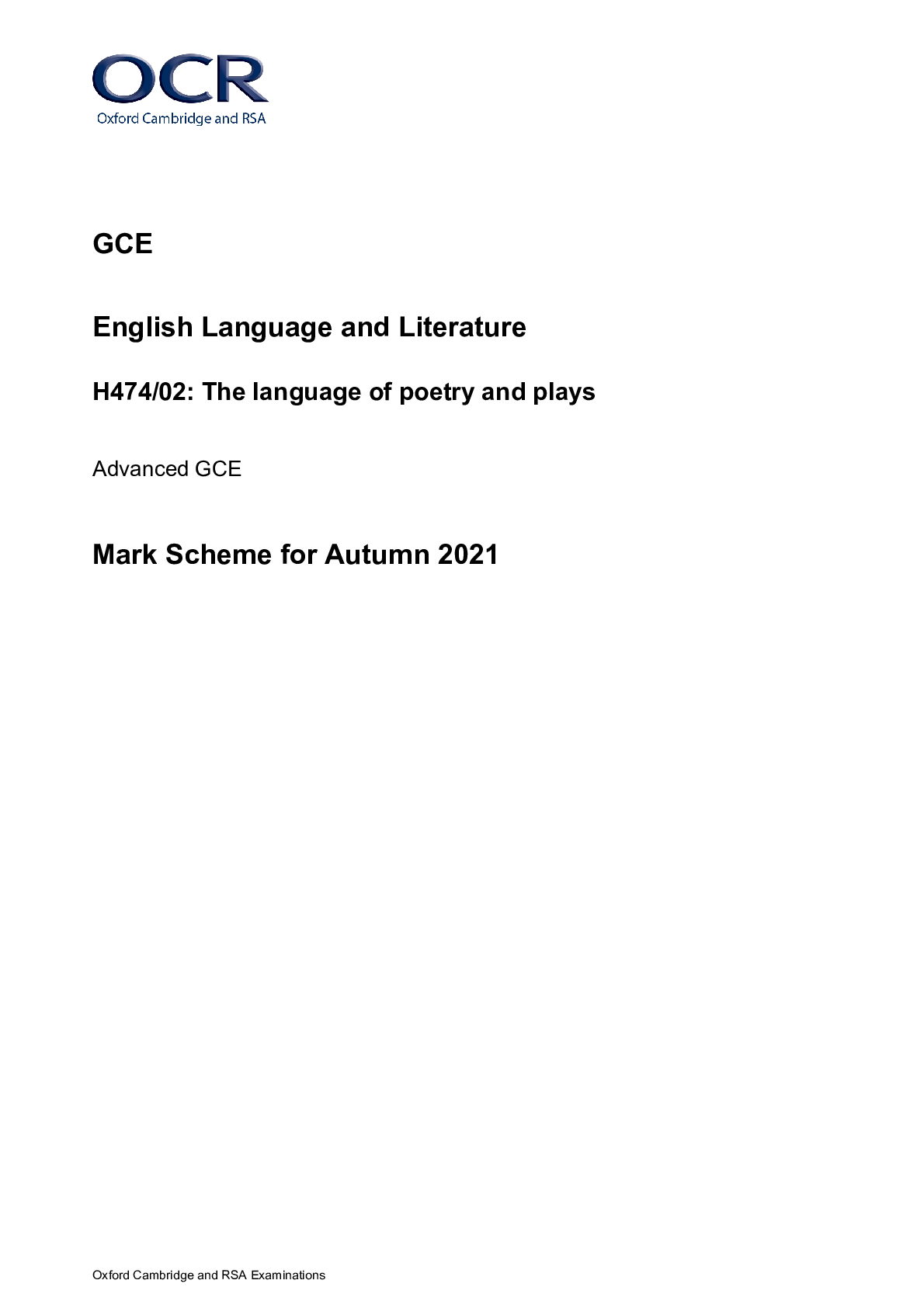




H63001Pure Mathematics and MechanicsMARK SCHEM.png)

